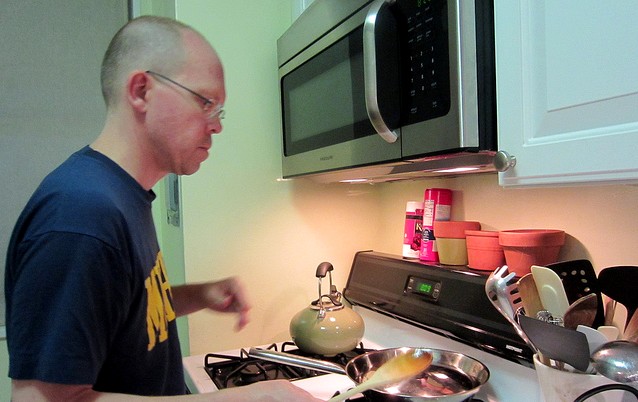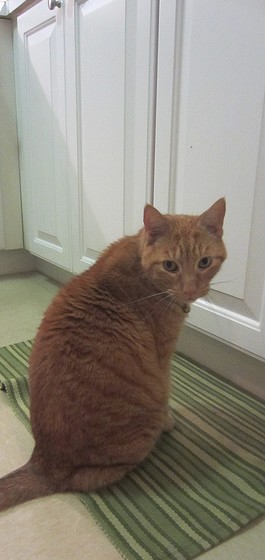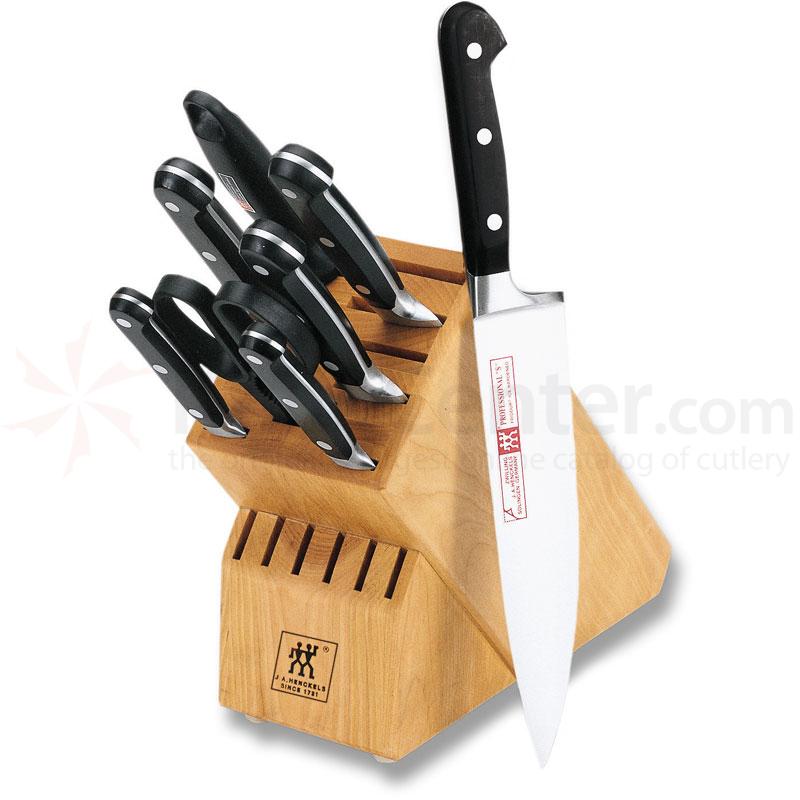Julia Child was a pioneer in the world of haute cuisine at a time when celebrity "chefdom" was a decidedly manly occupation. She didn’t care. The kitchen was her natural habitat and she had her own ways of making it work for her whether she was whipping up a soufflé or flaming a creme brûlée. 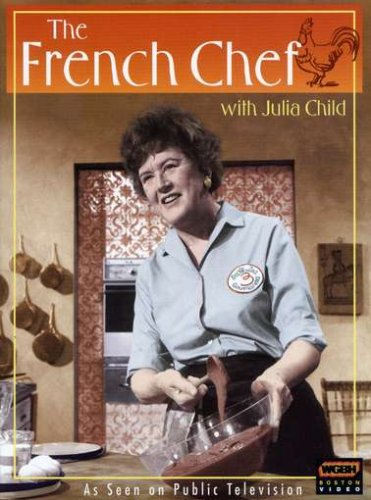 Child is credited with bringing French cuisine to America in the 1960s and was host of The French Chef on PBS which aired from 1963-1973. Interestingly, she did not learn to cook until she met her husband Paul Child, an American diplomat with a refined palate. Julia also worked for the government during WWII as a research assistant in the Secret Intelligence division of the OSS (Office of Strategic Services). It was in this capacity that she created her first recipe which was for shark repellent! It worked and is still in use today. After the war the couple settled in Paris where Paul worked for the US Foreign Service and Julia attended the renowned Le Cordon Bleu cooking school. She had fallen in love with French cuisine. Julia stood 6’2”, never had any children and left this world in 2004, two days shy of her 92nd birthday. She was quoted as saying, “with enough butter, anything is good”. Apparently her health was none the worse for it.
Child is credited with bringing French cuisine to America in the 1960s and was host of The French Chef on PBS which aired from 1963-1973. Interestingly, she did not learn to cook until she met her husband Paul Child, an American diplomat with a refined palate. Julia also worked for the government during WWII as a research assistant in the Secret Intelligence division of the OSS (Office of Strategic Services). It was in this capacity that she created her first recipe which was for shark repellent! It worked and is still in use today. After the war the couple settled in Paris where Paul worked for the US Foreign Service and Julia attended the renowned Le Cordon Bleu cooking school. She had fallen in love with French cuisine. Julia stood 6’2”, never had any children and left this world in 2004, two days shy of her 92nd birthday. She was quoted as saying, “with enough butter, anything is good”. Apparently her health was none the worse for it. 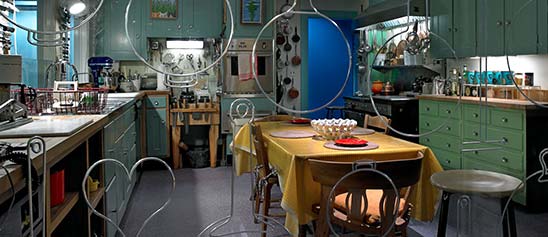 Julia’s real life kitchen was donated, moved and reassembled in the Smithsonian's National Museum of American History in 2001. The layout was devised by Julia and her husband and customized to her cooking needs, including higher counter tops to accommodate her height. Pots and cooking utensils are all placed exactly as they were in her home. Today Julia would be utterly amazed at the advancements in appliances, materials and new storage options. Although her kitchen goes back 50 years she had ideas and practices that are very relevant today. Here is what I think today’s kitchen would look like through the eyes of The French Chef.
Julia’s real life kitchen was donated, moved and reassembled in the Smithsonian's National Museum of American History in 2001. The layout was devised by Julia and her husband and customized to her cooking needs, including higher counter tops to accommodate her height. Pots and cooking utensils are all placed exactly as they were in her home. Today Julia would be utterly amazed at the advancements in appliances, materials and new storage options. Although her kitchen goes back 50 years she had ideas and practices that are very relevant today. Here is what I think today’s kitchen would look like through the eyes of The French Chef. 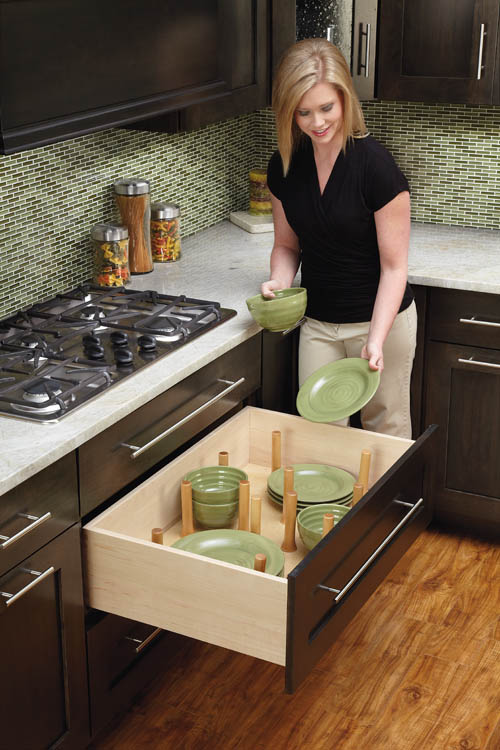 Organization and Easy AccessJulia was known for her handy and efficient peg board system. Companies like Rev-A-Shelf have taken this concept and expanded it so that it doesn’t have to be on the wall. Moving pegs allow these inserts to be customized. This is especially handy for dish storage in new kitchens that feature fewer upper cabinets. A "Julia kitchen" includes a place for everything and everything in it’s place.
Organization and Easy AccessJulia was known for her handy and efficient peg board system. Companies like Rev-A-Shelf have taken this concept and expanded it so that it doesn’t have to be on the wall. Moving pegs allow these inserts to be customized. This is especially handy for dish storage in new kitchens that feature fewer upper cabinets. A "Julia kitchen" includes a place for everything and everything in it’s place. 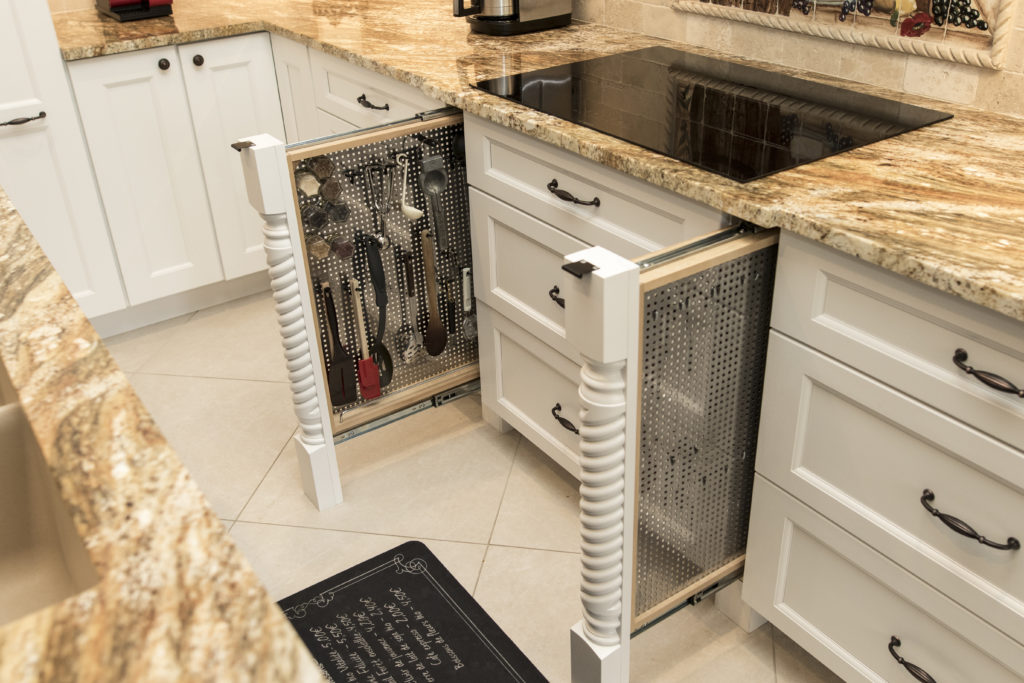 To Make the Cut You Must Have Great KnivesA self-proclaimed knife freak, Julia collected them all her life and never met one that was sharp enough for her! Check out this delightful anecdote from the New England Historical Society and you'll see what I mean. I agree that there is nothing more frustrating in the kitchen than dull knife. The winner in my book is J.A. Henckels International 8" Classic Chef's Knife in terms of quality and value for the money.
To Make the Cut You Must Have Great KnivesA self-proclaimed knife freak, Julia collected them all her life and never met one that was sharp enough for her! Check out this delightful anecdote from the New England Historical Society and you'll see what I mean. I agree that there is nothing more frustrating in the kitchen than dull knife. The winner in my book is J.A. Henckels International 8" Classic Chef's Knife in terms of quality and value for the money.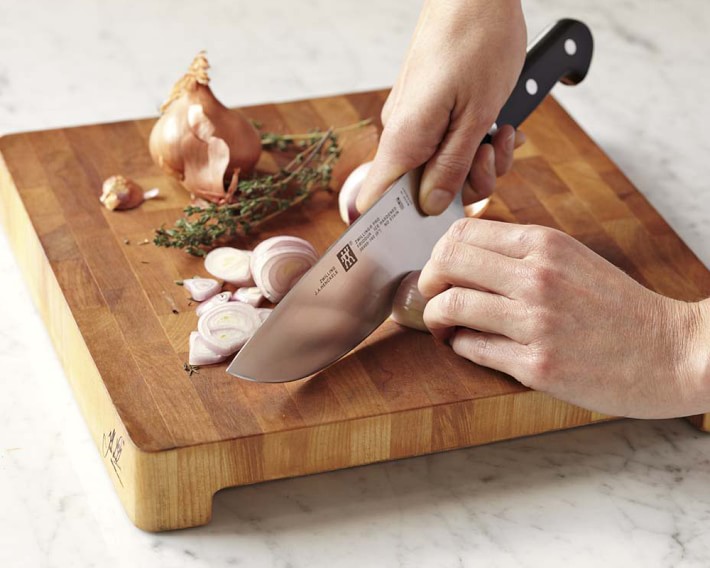 Having a great knife is half of the equation, now we have to store them. Julia preferred to house them on a magnet attached to the wall. Today she would love this railing system by Clever Storage that allows you to take advantage of the space between upper and lower cabinets. It's safe, attractive and accessible. Win!
Having a great knife is half of the equation, now we have to store them. Julia preferred to house them on a magnet attached to the wall. Today she would love this railing system by Clever Storage that allows you to take advantage of the space between upper and lower cabinets. It's safe, attractive and accessible. Win!  The Mother Ship of RangesJulia used a 1950s six burner used commercial gas range by Garland. This company is still in business so you can get a modern version today but I’m betting Julia would fall for the TriFuel range by Tecnogas Superiore for its state of the art versatility. In fact, it was just announced Product Innovator Award winner for 2016 by Kitchen & Bath Business Magazine. It features dual gas burners plus four induction zones and an electric griddle. Below are dual gas ovens equipped with two convection fans and a broiler.
The Mother Ship of RangesJulia used a 1950s six burner used commercial gas range by Garland. This company is still in business so you can get a modern version today but I’m betting Julia would fall for the TriFuel range by Tecnogas Superiore for its state of the art versatility. In fact, it was just announced Product Innovator Award winner for 2016 by Kitchen & Bath Business Magazine. It features dual gas burners plus four induction zones and an electric griddle. Below are dual gas ovens equipped with two convection fans and a broiler.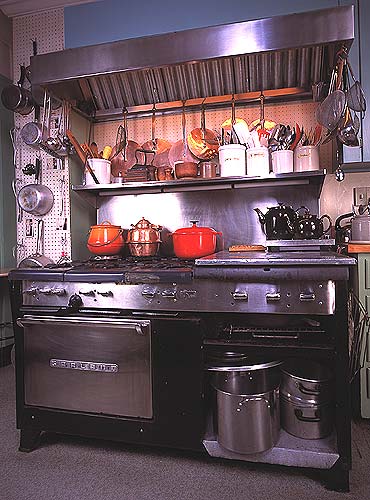
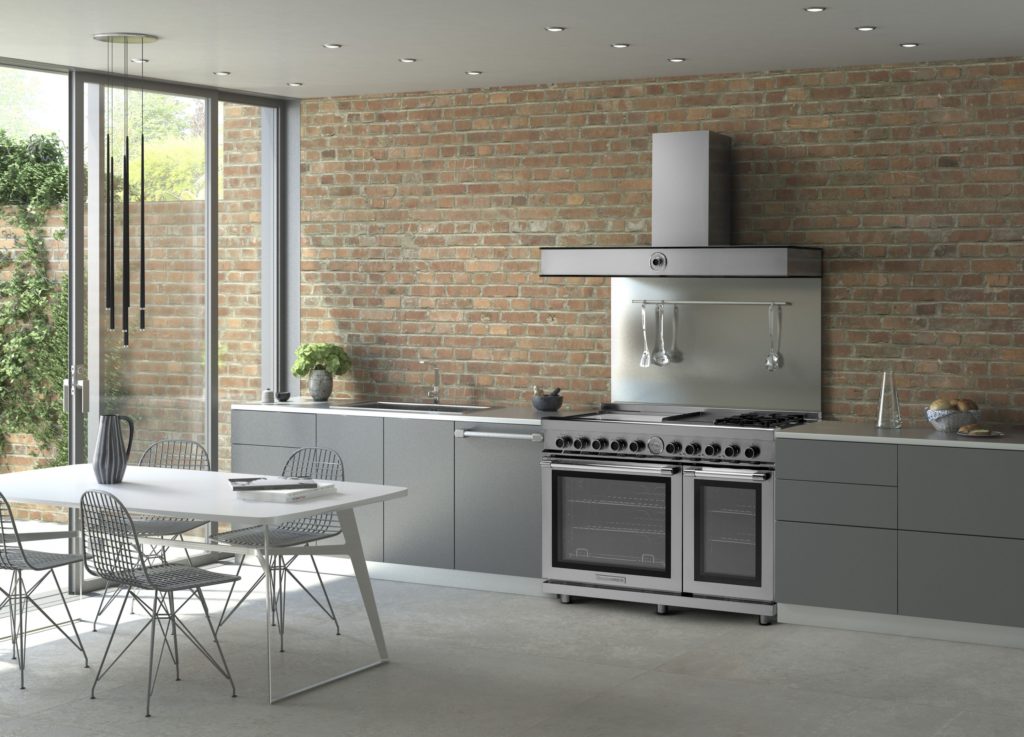 The Beauty of Butcher BlockThe French Chef was fond of her extra high maple counter tops for food preparation. You may not want an entire kitchen with wood tops but, if you can, it's great to have a section of it for food prep. Wood butcher block counters are a natural eco-friendly choice, absorb noise, are gentle on dishes and can be refinished. In addition to this, wood has inherent antibacterial qualities and can add a beautiful warmth to your kitchen. If you're going to use your counter for food prep it should have an oiled finish which does need to be maintained.
The Beauty of Butcher BlockThe French Chef was fond of her extra high maple counter tops for food preparation. You may not want an entire kitchen with wood tops but, if you can, it's great to have a section of it for food prep. Wood butcher block counters are a natural eco-friendly choice, absorb noise, are gentle on dishes and can be refinished. In addition to this, wood has inherent antibacterial qualities and can add a beautiful warmth to your kitchen. If you're going to use your counter for food prep it should have an oiled finish which does need to be maintained. 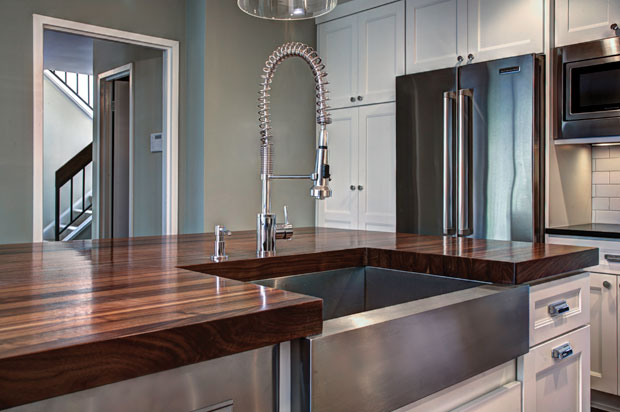 Last but not least never enter the kitchen without a sense of humor and adventure Child was never without it! She said, “in cooking you’ve got to have a what-the-hell attitude!”-If you'd like to experience cooking like a French chef you can stay at what was once Julia and Paul's part-time residence in Provence, France courtesy of Airbnb.
Last but not least never enter the kitchen without a sense of humor and adventure Child was never without it! She said, “in cooking you’ve got to have a what-the-hell attitude!”-If you'd like to experience cooking like a French chef you can stay at what was once Julia and Paul's part-time residence in Provence, France courtesy of Airbnb.
Men in the Kitchen: Compact Cooking
 Today KFL looks at the first in our series "Men in the Kitchen". A small city kitchen requires lots of planning and organization but that doesn't hold this guy back. Meet Tim, an enthusiastic resident of Manhattan for over 25 years. When I asked him why he left his native Mid-west for the Big Apple, he said, "I moved here because I was fascinated with NYC from the first time I visited, as a teenager, and knew I had to be in the middle of such an energetic, dynamic city.
Today KFL looks at the first in our series "Men in the Kitchen". A small city kitchen requires lots of planning and organization but that doesn't hold this guy back. Meet Tim, an enthusiastic resident of Manhattan for over 25 years. When I asked him why he left his native Mid-west for the Big Apple, he said, "I moved here because I was fascinated with NYC from the first time I visited, as a teenager, and knew I had to be in the middle of such an energetic, dynamic city. Since then he has never looked back. Tim, his wife of ten years and their two kitties have learned how to live "compact" in their cozy Manhattan apartment. Every Saturday night Face Book friends eagerly await "THE MENU" when Tim posts the results of his vegetarian kitchen creations. A typical post goes like this:Tonight's menu: peppery pitted Greek olives; blanched green beans tossed in garlic, butter & smoked salt; rigatoni alla norma; an Italian pinot; dark chocolate & coconut flake squares. Come on over. I don't know if anyone has ever taken him up on the "come on over" but I have a feeling it going to happen very soon.Here's what he had to say:KFL: How often do you cook and what is your specialty?Tim: I cook, on average, 5 days a week. My specialty--difficult to answer because there's not just one. I like to think I'm pretty good at several dishes, rather than just one. So I will always go back to one of those several when I need a crowd pleaser.
Since then he has never looked back. Tim, his wife of ten years and their two kitties have learned how to live "compact" in their cozy Manhattan apartment. Every Saturday night Face Book friends eagerly await "THE MENU" when Tim posts the results of his vegetarian kitchen creations. A typical post goes like this:Tonight's menu: peppery pitted Greek olives; blanched green beans tossed in garlic, butter & smoked salt; rigatoni alla norma; an Italian pinot; dark chocolate & coconut flake squares. Come on over. I don't know if anyone has ever taken him up on the "come on over" but I have a feeling it going to happen very soon.Here's what he had to say:KFL: How often do you cook and what is your specialty?Tim: I cook, on average, 5 days a week. My specialty--difficult to answer because there's not just one. I like to think I'm pretty good at several dishes, rather than just one. So I will always go back to one of those several when I need a crowd pleaser.